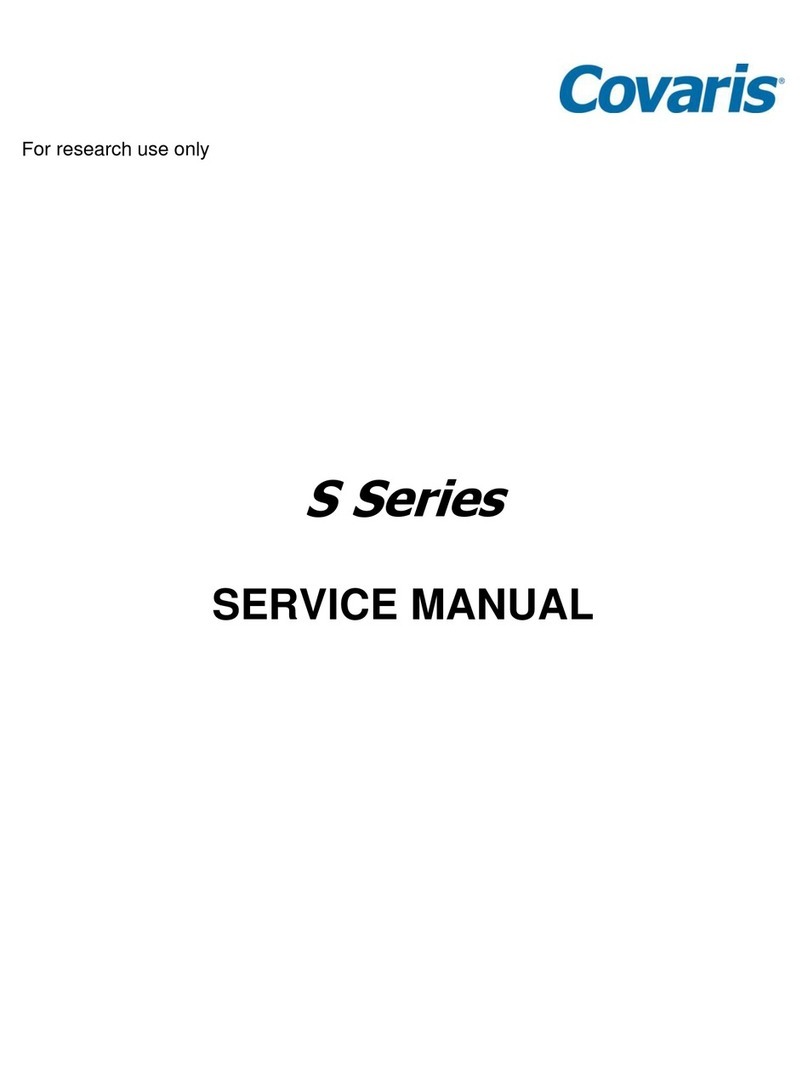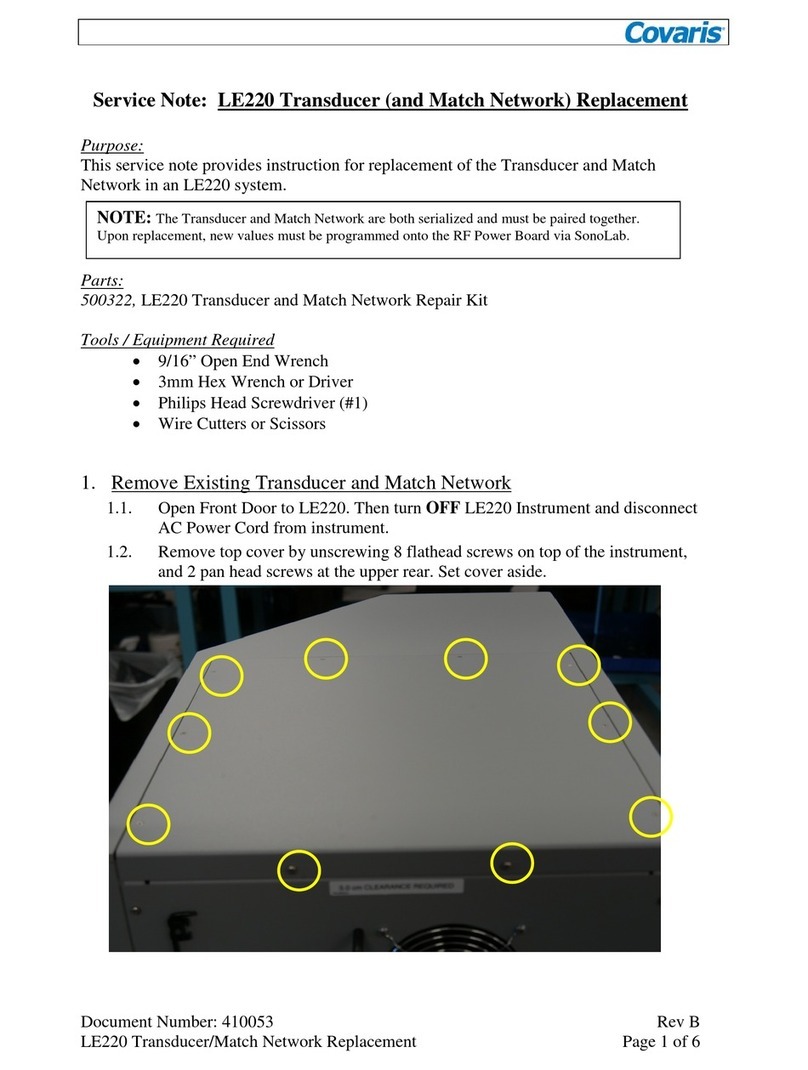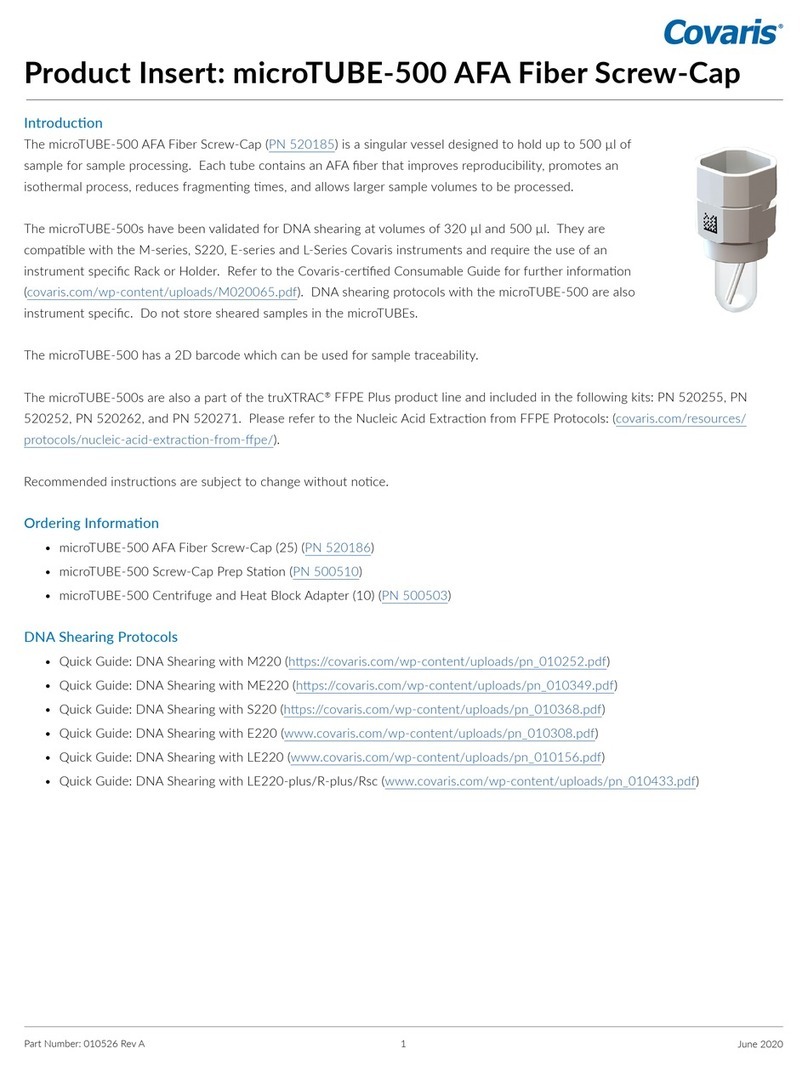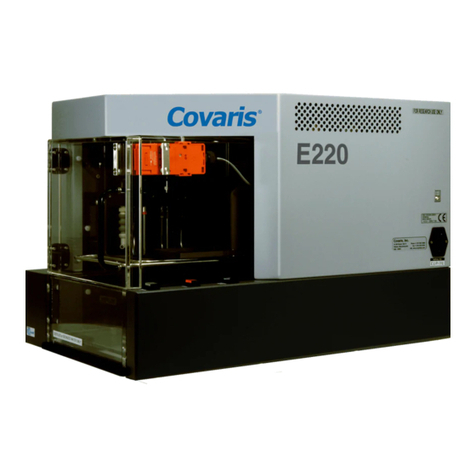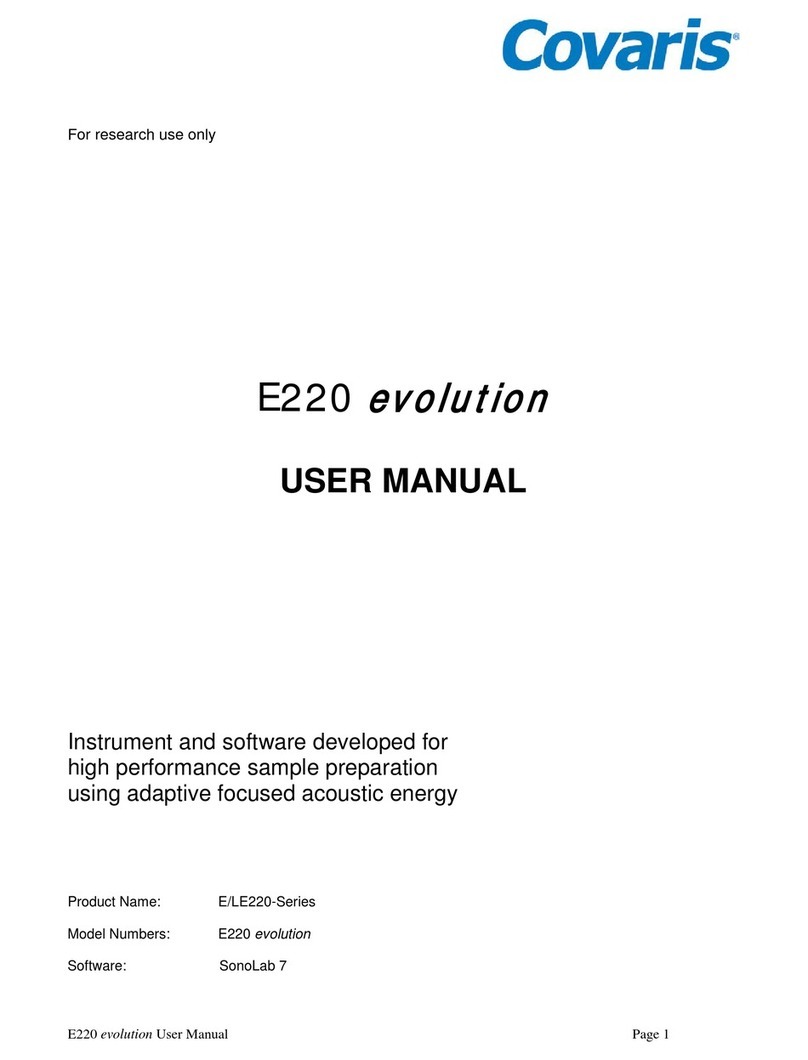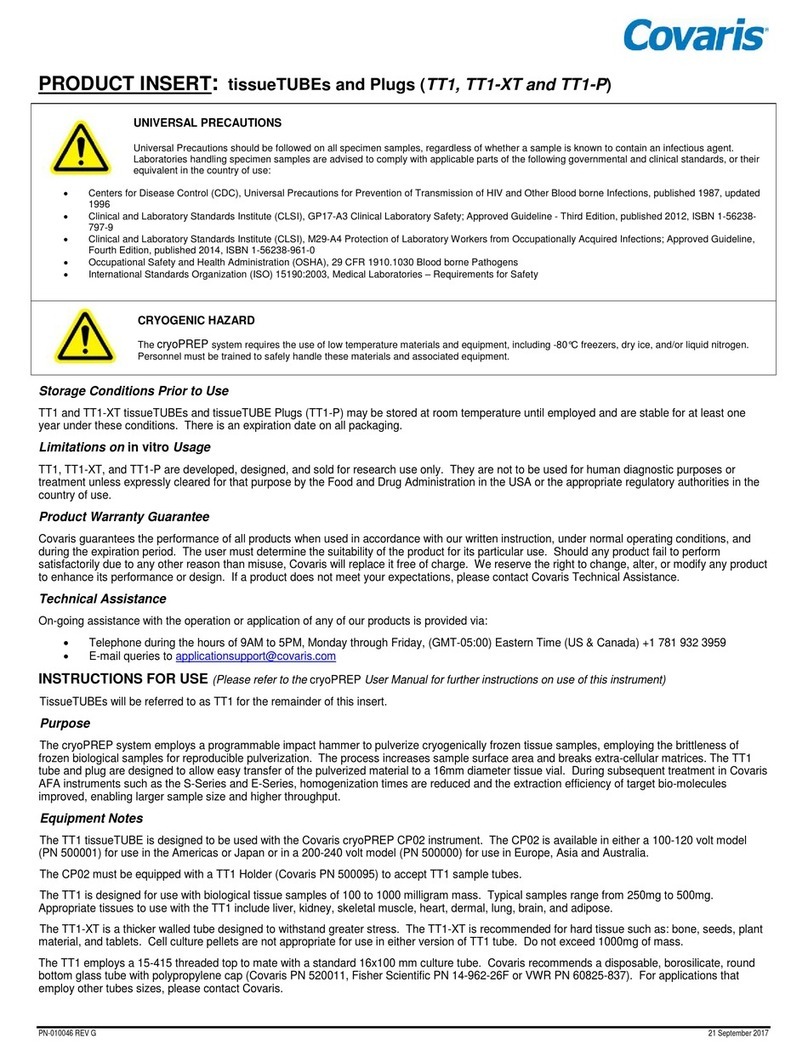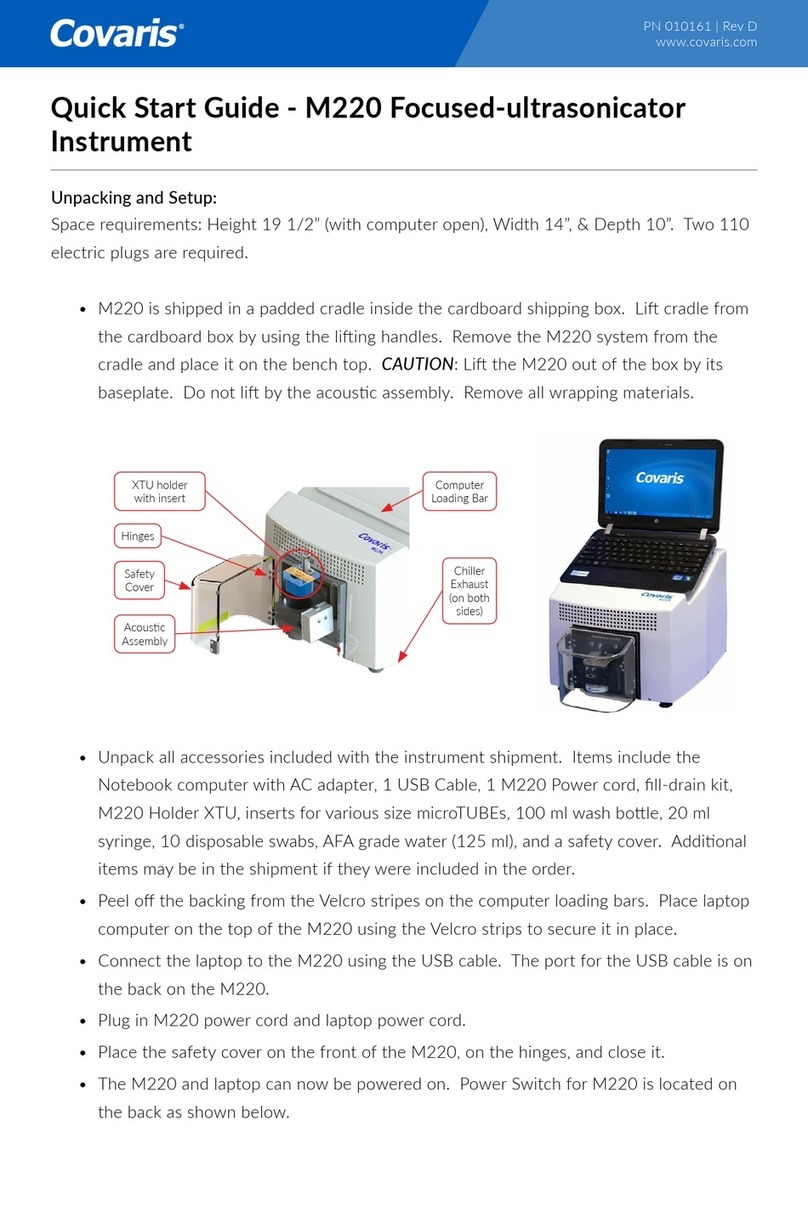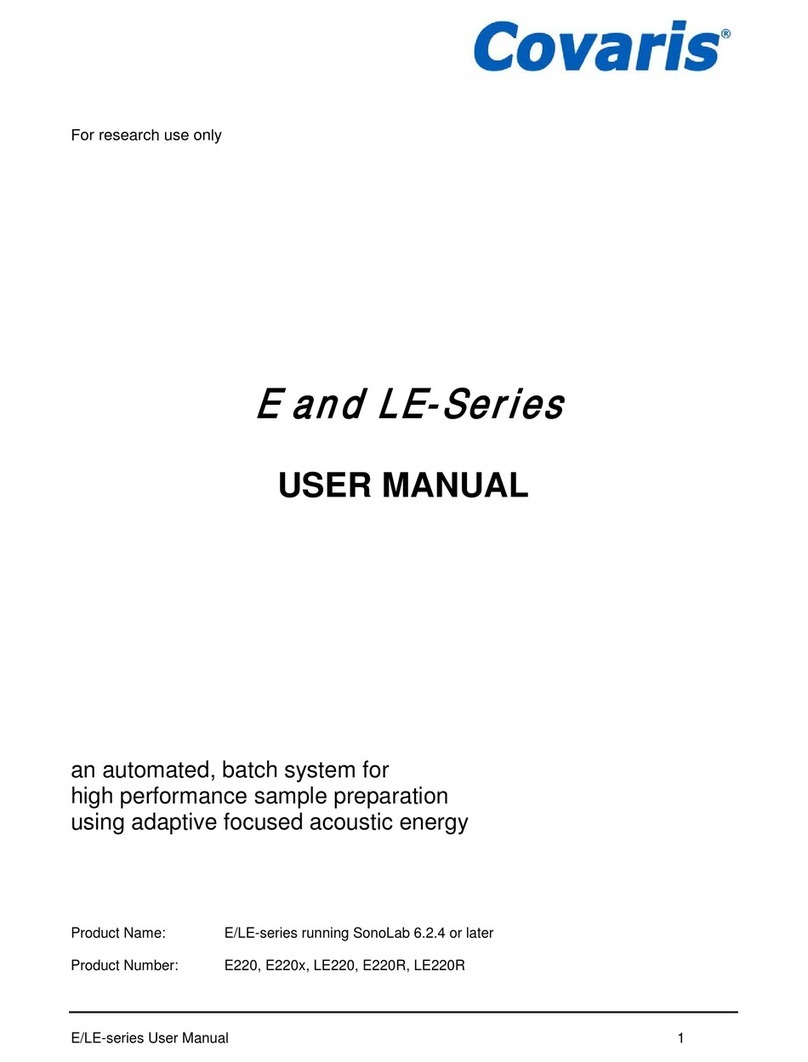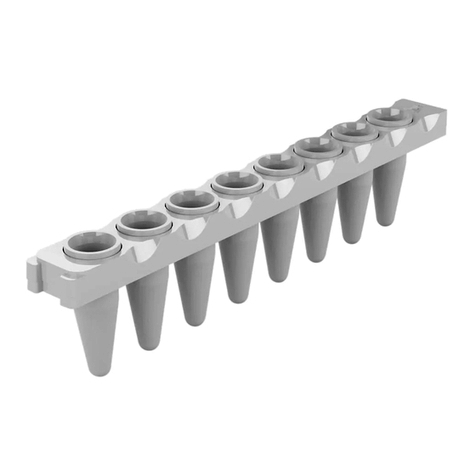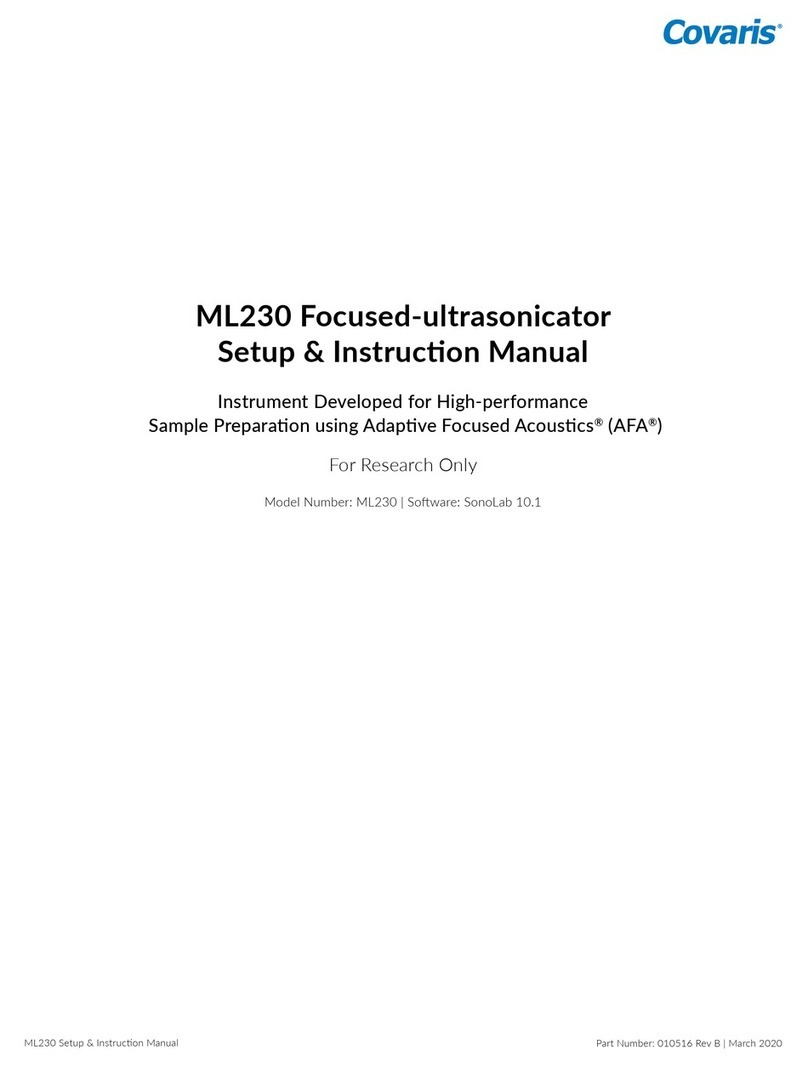3 Introduction
The Covaris Adaptive Focused Acoustics process works by sending
converging acoustic energy wave packets from a dish-shaped transducer to
a small, localized area. Mechanical energy is thus applied to the sample,
without directly contacting the sample. At low energy intensities, gentle
mixing is affected. At high energy intensities, intense shock waves result
in cell lysing or tissue disruption. The E-series accomplishes this via the
following subsystems, under the control of the Covaris SonoLab software.
3.1 Transducer
The transducer converts an electrical signal into an acoustic signal.
Specifically, a burst of electrical sine-waves is converted into a series
of acoustic pressure waves. The transducer is focused such that the
pressure waves converge at a focal point inside the treatment vessel.
The primary mechanism to process a sample or compound is the
growth and collapse of cavitation bubbles within the acoustic focal
zone, inside the sample vessel. The collapse of the bubbles results in
an intense, localized jet of solute acting upon the sample.
3.2 Interlock Subsystem
Safety interlocks prevent motion and energizing of the transducer
when doing so might result in damage to the transducer or injury to
operators.
3.3 Degassing System
In order for the acoustic process to function properly, the level of
dissolved gas in the water bath must be reduced. A positive-
displacement degassing pump pulls vacuum on an inlet tube
submerged in the water bath. This inlet tube has 6 small holes through
which the bath water enters. The sudden pressure drop inside the tube
causes dissolved gasses to come out of solution and form bubbles. The
water and the bubbles flow through the pump to the outlet tube before
the gas can re-dissolve in the water. The bubbles float to the surface
and vent to the atmosphere.
3.4 Motion Control System
The Covaris E-series is designed to treat multiple samples placed in a
tray, without further operator intervention once the run is started. The
system automatically positions each sample at the transducer’s focal
point.
The motion of the tray is implemented by stepper motors driving three
mechanical stages, one for each axis: x, y, and z. The x-axis is front to
back motion, the y-axis is left to right, and the z-axis is up and down.
